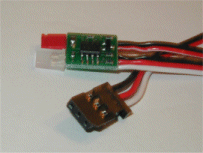 The Schieppati Switch with Rx-connector 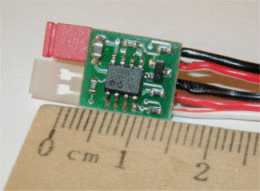 Less than an inch! 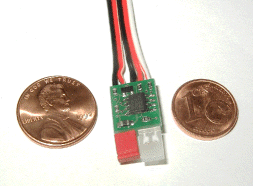 Almost the same size, but costs bit more ;-) 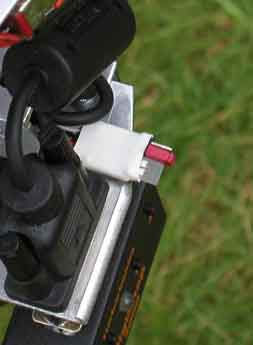 A Schieppati Switch used to fire a Nikon Coolpix through a DigiSnap 2000 The NEW ‘Twin Switch’ is a special version of the Schieppati Switch that can control, with two independent outputs, the double-step shutter used in some cameras. 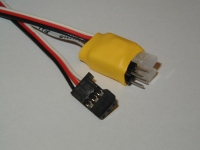 Does your camera work with the Twin Switch? Check it now Tip: Unlike a mechanical switch, the Schieppati Switch has a polarity. |
The Schieppati Switch is a universal R/C-switch that can be used to control lots of things on your KAP rig. It can be used to:
|
| You're lucky if you use a camera with an external electrical shutter release connection. It makes the rig construction much easier and saves the weight of an extra servo. Examples of such analog cameras are: the older Ricoh FF9s, FF10 and KR-10M (a SLR) or the newer Leica Z2x. Some Canon SLRs are also fitted with such a device. And there are more. In these cases you can easily fire the camera through the R/C system using a Schieppati Switch and a simple plug. Other popular KAP-cameras, like the Yashica T4, T4 super or T5 and the Olympus Stylus Epic (or mju-1 and -2 in Europe), can be modified (see Humez and Becot). This modification can also be applied to compact digital cameras as is shown by Cary Clements. Like most cameras his has a 2-step button, so he used 2 Schieppati Switches to keep the camera working the way Canon designed it to do. (Note: Schieppati responded to these kind of solutions by introducing the Twin Switch in September 2003) Other digicams use more complex protocols for remote control like the Olympus Camedia C-2020 and C-3030 and Nikon Coolpix cameras. These cameras can be fired by using a DigiSnap. And then the DigiSnap can be triggered with a Schieppati Switch. With two more Schieppati Switches you can even let the camera lens zoom in and out through the DigiSnap. And if you have a Coolpix 5000 or 5700 with a DigiSnap 5000/5700, a Schieppati Switch is also the way to go. Many KAPpers use a small wireless video system to check what the airborne camera is seeing. Most of these systems consume lots of power. To save on electrical power it is a good idea to switch the system off when you don't need it. A Schieppati Switch will do that too. Some KAPpers use micro motors from dismanteled video camcorders to move the camera on the rig. These too can be switched by using the Schieppati Switch. Main characteristics of the Schieppati Switch:
| |
More info: Links to other webpages with additional information (mostly pdf-files, so you need Acrobat Reader):
|